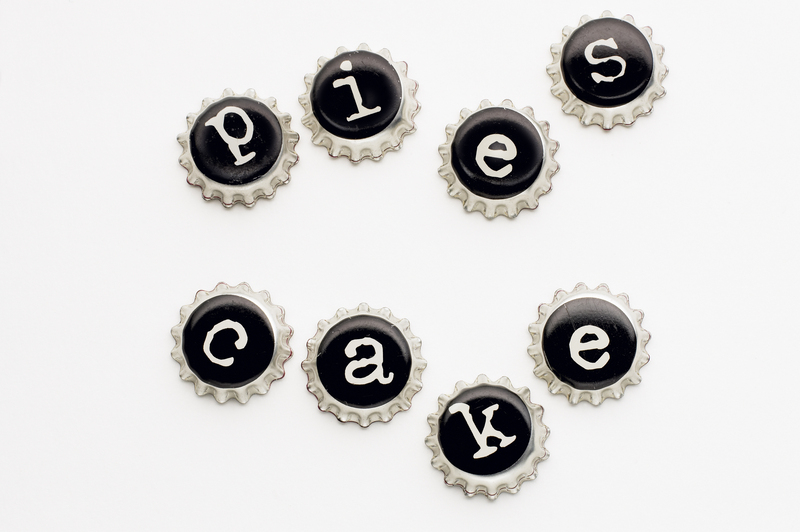Quick Guide to Start Recycling Paper at Work
Recycling isn't just a trend; it's a critical practice for conserving natural resources and reducing environmental impact. Among the different materials that can be recycled, paper is one of the most essential due to its ubiquitous use in most workplaces. Setting up a paper recycling program at your office not only helps the environment but also can foster a sense of community and responsibility among employees. This guide will help you navigate the process of starting a paper recycling program at your place of work.
1. Understand the Importance of Paper Recycling
Before diving into the how-tos, it's crucial to understand why recycling paper is essential. Paper constitutes a significant portion of office waste, and recycling it can have multiple benefits:
- Reduces Landfill Waste: Paper that isn't recycled often ends up in landfills, contributing to the growing waste problem.
- Saves Natural Resources: Recycling one ton of paper can save approximately 17 trees, 7,000 gallons of water, and 3.3 cubic yards of landfill space.
- Energy Conservation: It takes 70% less energy to recycle paper compared to making it from raw materials.

2. Get Management Buy-In
Having the support of upper management is crucial for the success of any recycling program. Here are a few ways to get their buy-in:
- Prepare a Proposal: Draft a detailed proposal outlining the benefits, cost savings, and steps needed to implement the program.
- Highlight Corporate Social Responsibility (CSR): Emphasize how the program aligns with the company's commitment to ethical practices and sustainability.
- Show Case Studies: Provide examples of other companies that have successfully implemented paper recycling programs.
3. Conduct a Waste Audit
A waste audit helps identify the types and quantities of paper waste generated at your workplace. Here's how you can conduct one:
- Collect Samples: For a week or two, collect samples of paper waste from various departments to get a comprehensive view.
- Sort and Measure: Separate the samples into categories (e.g., copier paper, cardboard, magazines) and measure the volume or weight of each category.
- Analyze Data: Use this data to identify the biggest sources of paper waste and potential areas for reduction or recycling.
4. Set Clear Goals and Objectives
Based on the waste audit, set specific, measurable, achievable, relevant, and time-bound (SMART) goals for your recycling program. For example:
- Reduce Paper Waste by 25%: Implement practices to reduce paper usage first, such as double-sided printing and digital documentation.
- Recycle 90% of Office Paper: Place recycling bins in every department and ensure they are easily accessible.
- Monthly Monitoring: Monitor the program's progress monthly to identify any issues and make necessary adjustments.
5. Choose the Right Recycling Bins and Locations
The success of your program heavily depends on having the right recycling bins and placing them in strategic locations. Consider the following:
- Type of Bins: Choose bins that are clearly marked for paper recycling to avoid contamination. Color-coded bins can be very effective.
- Placement: Place bins near printers, copiers, and common areas like break rooms and meeting rooms to encourage use.
- Quantity: Ensure there are enough bins so employees don't have to go out of their way to recycle.
6. Educate and Engage Employees
Employee participation is vital for the success of your recycling program. Here are some ways to educate and engage them:
- Kick-off Meeting: Hold a meeting to introduce the program, explain its benefits, and detail how it works.
- Email Reminders: Send periodic reminders and updates about the program's progress and any changes.
- Workshops and Training: Organize workshops or training sessions to educate employees on what can and cannot be recycled.
- Feedback Loop: Provide a channel for employees to give feedback and suggestions to improve the program.
7. Partner with a Recycling Service
Partnering with a professional recycling service can help ensure the success and efficiency of your program. When choosing a service:
- Reputation: Look for a reputable company with good reviews and a history of reliable service.
- Range of Services: Some companies offer additional services like shredding confidential documents, which could be beneficial.
- Cost: Obtain quotes from multiple providers to ensure you get the best value for your money.
- Reporting: Some companies offer detailed reports on the amount and type of materials recycled, which can be useful for tracking your progress.
8. Monitor and Review
It's essential to periodically review the effectiveness of your recycling program to ensure it meets its goals. Here's how:
- Gather Data: Collect data on the amount of paper recycled and compare it to your initial waste audit and set goals.
- Employee Feedback: Regularly survey employees to gather their feedback on the program and any challenges they face.
- Adjust and Improve: Use the collected data and feedback to make necessary adjustments. This could involve adding more bins, tweaking educational efforts, or refining your waste reduction strategies.

9. Celebrate Successes and Recognize Efforts
Celebrating milestones and recognizing employees' efforts can help maintain enthusiasm for the recycling program. Consider the following:
- Milestone Celebrations: Celebrate when significant goals are achieved, such as hitting a paper reduction target.
- Recognition Programs: Establish a recognition program to reward departments or individuals who excel in recycling efforts.
- Publicize Achievements: Share the program's successes in company newsletters, meetings, or intranet to keep everyone informed and motivated.
10. Extend Efforts Beyond Paper
While the primary focus of this guide is paper recycling, consider expanding your recycling efforts to include other materials such as plastics, metals, and e-waste:
- E-waste: Set up a collection system for electronics, batteries, and other electronic waste items.
- Plastics and Metals: Introduce bins for recycling plastics and metals, especially if your workplace uses these materials frequently.
- Organics: If feasible, consider setting up a composting program for organic waste from office kitchens and break rooms.
Implementing a paper recycling program at work may seem daunting initially, but following these steps will guide you toward creating a successful and sustainable initiative. By involving management, educating employees, and continuously monitoring and improving your efforts, you can significantly reduce your workplace's environmental footprint. Remember, every sheet of paper recycled makes a difference, and your leadership in this area can inspire others to adopt similar practices.
Starting a paper recycling program is not just about waste reduction; it's about building a culture of sustainability and responsibility. By following this quick guide, you can make a meaningful impact on the environment and set a positive example for other organizations to follow.

